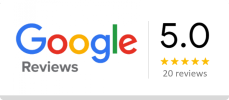Why Website Security Is More Important Than Ever
In today’s digital-first world, your website isn’t just a place for information it’s the foundation of your brand’s presence. Whether you run a small business, an e-commerce store, a blog, or a large corporate platform, your website is working for you 24/7, connecting with customers and building your reputation.
However, the more valuable your website becomes, the more attractive it is to hackers. Cyberattacks are no longer rare events that only affect big corporations. Every day, thousands of websites large and small are targeted. Some are hit by automated attacks looking for weaknesses; others are deliberately breached by individuals looking to steal data or cause damage.
The Changing Nature of Cyber Threats
Cybercriminals have become increasingly sophisticated. In the past, many attacks were simply about defacing websites for notoriety. Today, they are often financially motivated, aiming to steal sensitive customer data, access bank details, or inject malicious software for long-term exploitation. This shift means that even small websites with modest traffic are considered valuable targets because they can be used to access larger networks or as platforms for distributing malware.
The True Cost of a Security Breach
Many website owners underestimate the impact of a security breach until it happens to them. The cost isn’t just financial it can also be emotional, reputational, and operational.
a. Immediate Financial Losses
A hacked website can mean instant downtime. For e-commerce stores, this means missed sales for service businesses, lost leads or bookings. Even a few hours offline can translate into hundreds or thousands of dollars in lost revenue. On top of this, there’s the cost of hiring professionals to repair the damage, remove malware, and restore your site.
b. Long-Term Reputational Damage
The loss of customer trust can be harder to recover from than the attack itself. If visitors see a browser warning that your site is unsafe, most will leave immediately and many will never return. In the age of social media, news of a hack spreads fast, and potential customers may choose a competitor instead.
d. Legal and Compliance Risks
Data protection laws such as the New Zealand Privacy Act and the EU’s General Data Protection Regulation (GDPR) place strict responsibilities on businesses to safeguard personal information. A breach can result in investigations, fines, and even lawsuits, especially if sensitive data like addresses, emails, or payment details are exposed.
e. Impact on Search Rankings
Google actively blacklists hacked websites. If malware is detected, your site could be removed from search results entirely. Even if it isn’t blacklisted, your rankings can drop significantly, and it can take months of work to recover.
Understanding the Types of Website Threats
Knowing what you’re defending against makes it easier to build strong security measures.
a. Malware Infections
Malware (malicious software) is one of the most common threats. Hackers can insert harmful code into your website that steals data, redirects visitors to scam sites, or uses your server to send spam emails.
b. Phishing Attacks
Phishing often involves creating fake login pages or contact forms to trick users into entering their credentials or personal information. These attacks are often very convincing, using your own branding and design to appear legitimate.
c. SQL Injection
This is a technical attack where hackers exploit vulnerabilities in your website’s code to manipulate your database. They can extract sensitive information, delete records, or gain administrative access.
d. Cross-Site Scripting (XSS)
XSS attacks involve injecting malicious scripts into your site, so they run in the browsers of your visitors. These scripts can steal cookies, capture login details, or perform actions on behalf of the user without their consent.
e. DDoS (Distributed Denial of Service) Attacks
A DDoS attack floods your website with traffic from multiple sources, overwhelming your server and making it inaccessible to legitimate users.
f. Weak Password Exploits
If your admin panel password is short, simple, or reused, hackers can often guess it with automated tools in minutes.
g. Outdated Software Vulnerabilities
Running old versions of your CMS, plugins, or themes leaves your site open to attacks that exploit known weaknesses.
Laying the Foundations for Strong Website Security
Protecting your website starts with building a strong foundation of core security measures.
a. Switch to HTTPS with SSL Encryption
An SSL certificate encrypts data between your website and your visitors. This ensures that even if the information is intercepted, it cannot be read. It also signals to users (via the padlock icon in their browser) that your site is safe. Google uses HTTPS as a ranking factor, so it’s good for SEO as well as security.
b. Keep All Software Up to Date
Updates aren’t just about new features they often include patches for security vulnerabilities. Whether you’re using WordPress, Joomla, Shopify, or any other platform, ensure that your CMS, themes, and plugins are always running the latest versions.
Securing User Access
a. Strong, Unique Passwords
Every account connected to your website from your CMS to your hosting panel should have a strong, unique password. Avoid predictable words or phrases, and include a mix of letters, numbers, and symbols.
b. Two-Factor Authentication
Two-factor authentication (2FA) adds an extra verification step when logging in, making it much harder for attackers to gain access even if they know your password.
c. Limit Login Attempts
By restricting the number of failed login attempts, you reduce the chances of brute force attacks, where hackers try thousands of password combinations until one works.
Backups: Your Safety Net
No matter how secure your website is, you should always prepare for the worst. Regular backups allow you to restore your site quickly after an attack. Schedule automatic backups and store them in at least two locations for example, on your server and in a secure cloud storage service.
Extra Layers of Protection
a. Web Application Firewalls
A Web Application Firewall (WAF) acts as a gatekeeper, blocking malicious traffic before it reaches your site. Providers like Cloudflare and Sucuri offer easy-to-use firewall solutions that protect against a wide range of threats.
b. Security Scanning
Run regular scans to detect malware, suspicious changes, and vulnerabilities early. This proactive approach lets you fix problems before they cause serious damage.
c. File Upload Restrictions
If your site allows users to upload files, limit the file types and scan all uploads for malicious content.
E-Commerce Websites Need Extra Care
If you sell products or services online, security becomes even more critical. You are handling payment information, addresses, and other personal data. Always use a secure, PCI-compliant payment gateway, and never store full credit card numbers on your server. Monitor transactions for unusual activity, and keep your customers informed about how you protect their data.
Responding to a Security Breach
Even the best-protected websites can be breached. If this happens, act quickly. Take your site offline to stop further damage, change all passwords, and scan for malware. Restore from a clean backup if possible, then identify and fix the vulnerability that caused the breach. Finally, communicate transparently with affected users and comply with any legal notification requirements.
Security Is an Ongoing Process
Website security is not a one-time project. Hackers are constantly developing new techniques, and what protects you today might not be enough tomorrow. Make security part of your regular website maintenance routine update software, check logs, run scans, and review your access controls regularly.
Your website is a valuable asset, and the effort you put into protecting it directly affects your reputation, customer trust, and business success. With the right measures in place, you can ensure that your online presence remains safe, reliable, and ready to serve your audience without interruption. In today’s digital world, a secure site is just as important as a stylish one that’s why our website design Auckland based services cover both.

